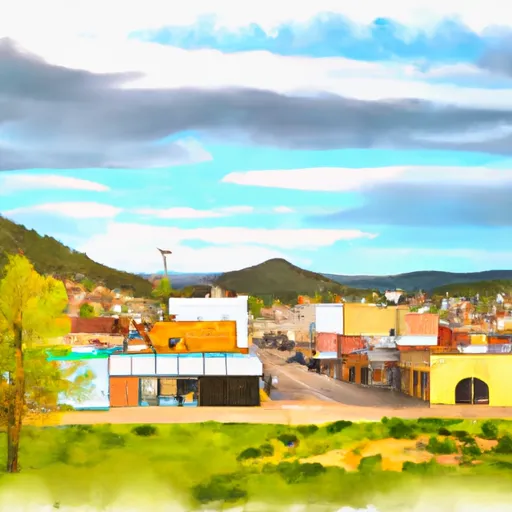-
 Snoflo Premium
Snoflo Premium
Get unlimited access to all our content
With no Ad interruptions! - Start Your Free Trial Login with existing account
Townsend
Eden Index
Climate
7.1
•
Recreation
4.7
•
Community
•
Safeguard
4.5/10

Townsend, Montana is a small town located in the southwestern part of the state. It has a continental climate with warm summers and cold winters. Summers are generally mild with average temperatures ranging from the 70s to low 80s Fahrenheit, while winters are cold with average temperatures in the 20s and occasional sub-zero temperatures. The town experiences moderate precipitation throughout the year, with the majority of it occurring during the spring and early summer months.
The hydrology constituents in Townsend are largely influenced by the Missouri River, which flows nearby. The river provides opportunities for fishing, boating, and other water activities. The area is also home to several lakes and streams, offering additional fishing and water-based recreational opportunities.
Townsend is surrounded by natural beauty, making it a haven for outdoor enthusiasts. The nearby Big Belt Mountains and Elkhorn Mountains offer numerous hiking and camping opportunities. Outdoor activities such as hunting, bird-watching, and wildlife photography are also popular in the area. Additionally, Townsend is within close proximity to several national forests, providing even more opportunities for outdoor recreation.
What is the Eden Index?
The Snoflo Eden Index serves as a comprehensive rating system for regions, evaluating their desirability through a holistic assessment of climate health, outdoor recreation opportunities, and natural disaster risk, acknowledging the profound impact of these factors on livability and well-being.
Climate Health Indicator (CHI): 7.1
Townsend receives approximately
297mm of rain per year,
with humidity levels near 67%
and air temperatures averaging around
7°C.
Townsend has a plant hardyness factor of
4, meaning
plants and agriculture in this region thrive during a short period during spring and early summer. Most
plants will die off during the colder winter months.
By considering the ideal temperature range, reliable water supplies, clean air, and stable seasonal rain or snowpacks, the Climate Health Indicator (CHI) underscores the significance of a healthy climate as the foundation for quality living.
A healthy climate is paramount for ensuring a high quality of life and livability in a region, fostering both physical well-being and environmental harmony. This can be characterized by ideal temperatures, reliable access to water supplies, clean air, and consistent seasonal rain or snowpacks.
Weather Forecast
Streamflow Conditions
Upper Missouri
Area Rivers
Upper Missouri
Snowpack Depths
Upper Missouri
Reservoir Storage Capacity
Upper Missouri
Groundwater Levels
Recreational Opportunity Index (ROI): 4.7
The Recreational Opportunity Index (ROI) recognizes the value of outdoor recreational options, such as parks, hiking trails, camping sites, and fishing spots, while acknowledging that climate plays a pivotal role in ensuring the comfort and consistency of these experiences.
Access to outdoor recreational opportunities, encompassing activities such as parks, hiking, camping, and fishing, is crucial for overall well-being, and the climate plays a pivotal role in enabling and enhancing these experiences, ensuring that individuals can engage in nature-based activities comfortably and consistently.
Camping Areas
| Campground | Campsites | Reservations | Toilets | Showers | Elevation |
|---|---|---|---|---|---|
| Deepdale FAS | None | 3,845 ft | |||
| Vigilante | 16 | 4,415 ft | |||
| Fairweather FAS | None | 3,987 ft | |||
| Canyon Ferry Lake | None | 3,799 ft | |||
| Toston Dam | None | 4,215 ft | |||
| Missouri Headwaters State Park | 25 | 4,046 ft | |||
| Yorks Islands FAS | 10 | 3,851 ft |
Nearby Ski Areas
Catastrophe Safeguard Index (CSI):
The Catastrophe Safeguard Index (CSI) recognizes that natural disaster risk, encompassing floods, fires, hurricanes, and tornadoes, can drastically affect safety and the overall appeal of an area.
The level of natural disaster risk in a region significantly affects safety and the overall livability, with climate change amplifying these risks by potentially increasing the frequency and intensity of events like floods, fires, hurricanes, and tornadoes, thereby posing substantial challenges to community resilience and well-being.
Community Resilience Indicator (CRI):
The Community Resilience Indicator (CRI) recognizes that education, healthcare, and socioeconomics are crucial to the well-being of a region. The CRI acknowledges the profound impact of these elements on residents' overall quality of life. By evaluating educational resources, healthcare accessibility, and economic inclusivity, the index captures the essential aspects that contribute to a thriving community, fostering resident satisfaction, equity, and social cohesion.

